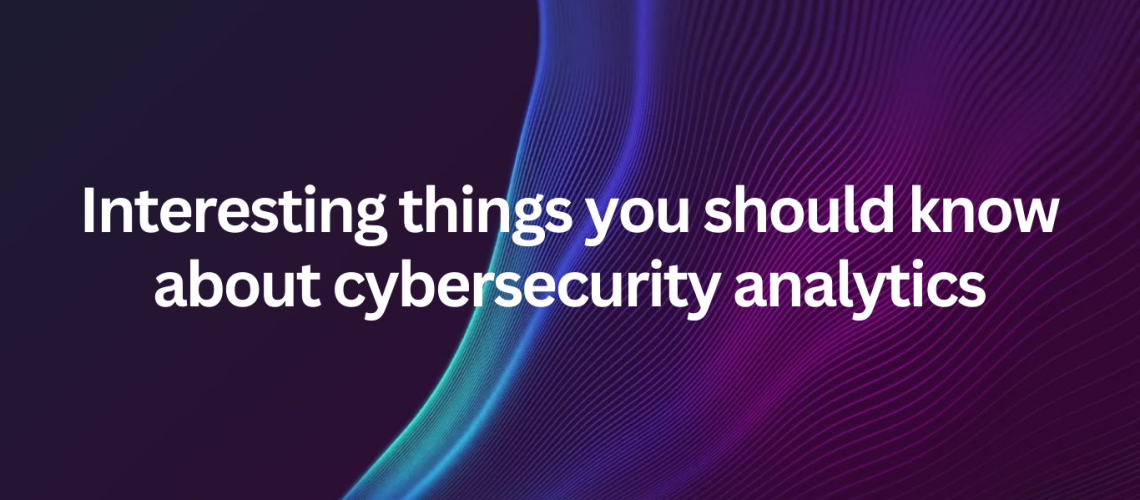“Cybersecurity analytics” refers to the practice of using data analysis techniques to identify, assess, and respond to security threats and incidents in digital systems, networks, and applications. It involves collecting, processing, and analyzing various types of data to gain insights into potential security risks and to improve an organization’s overall security posture. We being one of the best cybersecurity companies in Dubai are here with some interesting things to know about cybersecurity analytics:
Data Variety and Sources:
Cybersecurity deals with diverse data sources, including logs from network devices, security appliances, user activities, application behaviors, and more. These data sources collectively provide a comprehensive view of an organization’s digital environment.
Threat Detection:
One of the primary goals of cybersecurity is to detect and prevent cyber threats. By analyzing patterns and anomalies in network traffic, user behavior, and system activities, security teams can identify suspicious activities that might indicate a potential breach or attack.
Also Read: Enhancing Digital Safety With Effective Cybersecurity Solutions
Machine Learning and AI:
Machine learning and artificial intelligence play a crucial role in cybersecurity analytics. These technologies can automate the process of identifying abnormal behaviors, recognize new and evolving threats, and help security systems adapt to changing attack methods.
Behavioral Analysis:
Cybersecurity focuses on behavioral analysis, which involves understanding normal patterns of behavior within an organization’s digital systems. Deviations from these patterns can indicate unauthorized access or other security breaches.
Also Read: How to find the best cybersecurity consulting companies in Dubai?
SIEM (Security Information and Event Management):
SIEM tools are commonly used in cybersecurity analytics. These platforms collect and correlate data from various sources, allowing security teams to monitor and respond to security events in real-time.
Threat Intelligence:
Cybersecurity analytics incorporates threat intelligence feeds, which provide information about emerging threats, vulnerabilities, and attacker tactics. Integrating threat intelligence into analytics processes enhances an organization’s ability to proactively defend against threats.
Incident Response:
Cybersecurity assists in incident response by providing actionable insights during and after a security incident. Analysts can investigate the root cause of the incident, assess the extent of the breach, and develop strategies to mitigate and recover from the attack.
Risk Assessment:
Analytics helps organizations assess their risk posture by identifying weak points in their digital infrastructure and determining potential vulnerabilities that attackers could exploit.
Also Read: How to Choose the Best Cybersecurity and Infrastructure Security Agency in Dubai?
User and Entity Behavior Analytics (UEBA):
UEBA focuses on analyzing the behaviors of users and entities (such as applications, and devices) within an organization’s network. This approach can identify insider threats and compromised accounts by detecting unusual or anomalous activities.
Visualization and Reporting:
Data visualization techniques are often used in cybersecurity to present complex security data in a comprehensible manner. Visualizations help security teams quickly grasp the state of their systems and make informed decisions.
Compliance and Regulation:
Many industries are subject to cybersecurity regulations and compliance requirements. Cybersecurity analytics aids organizations in meeting these standards by providing insights into their security posture and demonstrating adherence to security best practices.
Continuous Improvement:
Cybersecurity analytics is an ongoing process. It involves continuously refining and enhancing analytical models based on the latest threat intelligence and evolving attack techniques.
Overall, cybersecurity is a dynamic and vital aspect of modern cybersecurity practices. It enables organizations to proactively defend against cyber threats, respond effectively to incidents, and make informed decisions to protect their digital assets and sensitive information. Want to know more things about cybersecurity? Contact us at Green Edge Computers to know more.
FAQs:
What is cybersecurity analytics?
Cybersecurity is the practice of using data analysis techniques to identify, assess, and respond to security threats and incidents in digital systems, networks, and applications.
Why is cybersecurity analytics important?
Cybersecurity helps organizations detect and prevent cyber threats by analyzing patterns and anomalies in data, enabling proactive defense and quicker incident response.
What types of data are used in cybersecurity analytics?
Various types of data are used, including network logs, user activities, application behaviors, threat intelligence feeds, and more, to gain insights into potential security risks.
How does machine learning contribute to cybersecurity?
Machine learning helps automate threat detection by learning from historical data and identifying abnormal behaviors or patterns that might indicate a security breach.
What is SIEM, and how does it relate to cybersecurity analytics?
SIEM (Security Information and Event Management) tools collect and correlate security data from different sources to provide real-time monitoring, alerting, and incident response capabilities.



